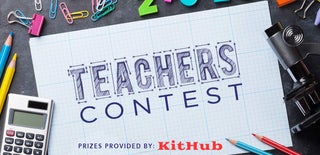Introduction: Differentiate Using a Multiple Intelligence Inventory
Grouping students can get tedious and students tend to complain when working with the same kids all the time. Instead of grouping them alphabetically or chronologically or by readiness or by height or however you might do it, why don't you try placing students into groups by how they like to learn?
I have been using this strategy for the past twelve+ years and although I don't have statistical data to prove it actually helps students learn, I have years of observing students who tend to be more engaged when working on projects that fit their learning preferences.
Because this would be such a difficult experiment to conduct, there are some mixed opinions as to whether or not it actually works. You can do your own research HERE.
For example, if I'm teaching students about the cardiovascular system, I might have a student/group work on a creative story about a red blood cell who goes on vacation, another group might make a poster about the cardiovascular system, another group might make a board game about the cardiovascular system that up to four people can play, and a final group might make a Venn diagram comparing and contrasting the cardiovascular systems of different animals. The choices are varied, but the content is all related. The entire class would be learning about the cardiovascular system, but my logical kids are happy, my interpersonal kids are working in groups, my musical kids are happy, my intrapersonal kids are happy... and when everyone is happy they are more likely to learn something.
Step 1: Take a Multiple Intelligence Indicator
You will want to have students take a multiple intelligence indicator. I have linked one that I like HERE. This will help students gain a better understanding of the ways they like to learn.
Step 2: Graph Results
After collecting the data from the survey, it's best for students to have a visual representation of their work. This also serves as a great tool to share with other teachers, parents during conferences, administrators during contract negotiations...
To make your life easier, students should all color the bars of their graphs the same colors. I like to use the order I have listed below.
Verbal Linguistic = Red
Logical / Mathematical = Orange
Spatial = Yellow
Musical = Green
Bodily Kinesthetic = Blue
Interpersonal = Purple
Intrapersonal = Black
Naturalistic = Brown
Step 3: Popsicle Sticks
Once they have calculated their totals and had a chance to visualize the results with their bar graph, students should write their name in the middle of a popsicle stick (both sides) and color one end of their stick according to their top two preferences.
Sometimes, students will have a two way tie. They can color one end of the stick one color and the opposite side of the stick (on the same end) the other color. Sometimes, students will have a three-way tie. I usually allow them to add an extra color to one side, but encourage them to try to stick to two.
Once you collect all the popsicle sticks, you'll have a simple way to group students by their learning preference. You could also choose sticks with different colors in hopes that they will each bring different strengths to a group project. Finally, you could ignore the colors and just pick sticks to create your groups at random. You can also use the sticks when asking questions to the whole class. It keeps them on their toes and prevents you from leaving anyone out.
I hope you find this method of grouping students as useful and meaningful as I do. I've also included an EXAMPLE lesson on Cell Organelles you are free to use to help get you started.
Let me know how it goes!

Participated in the
Teachers Contest 2017













